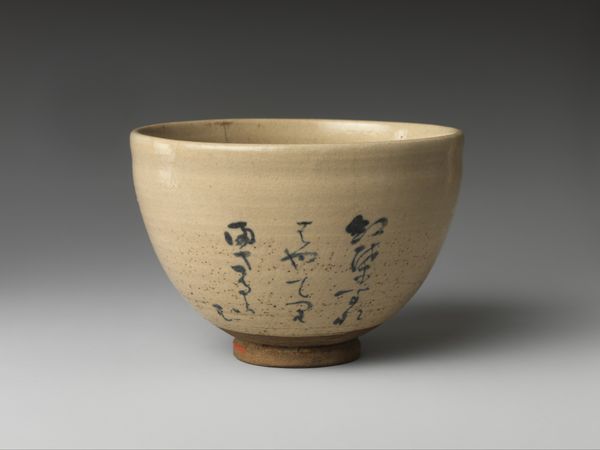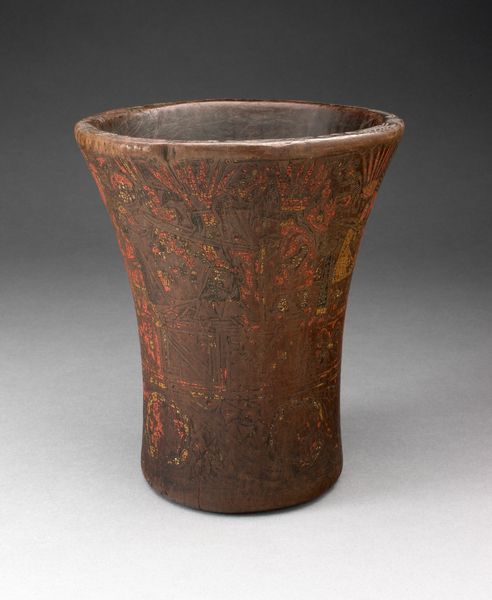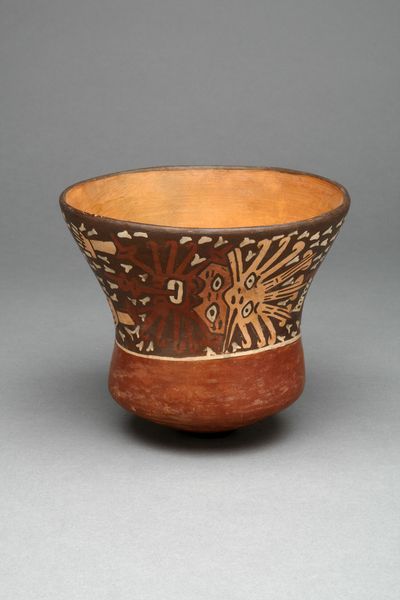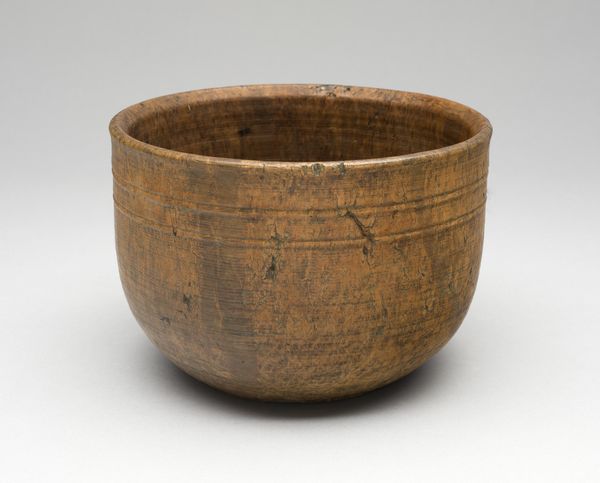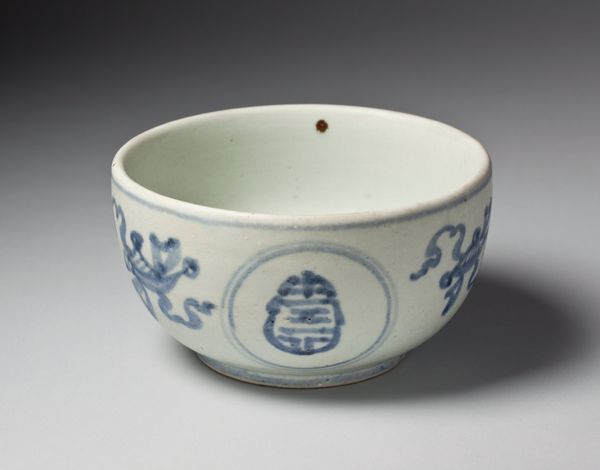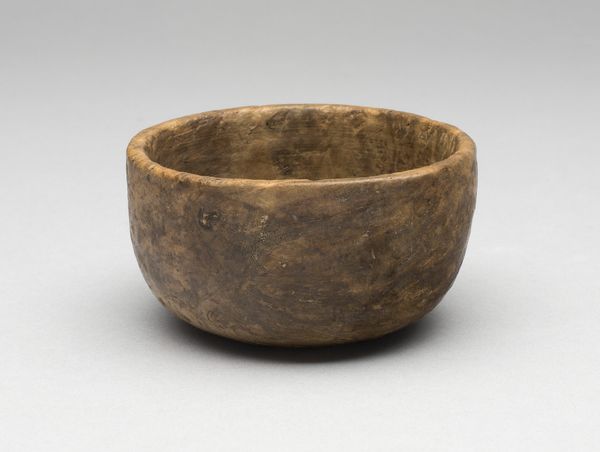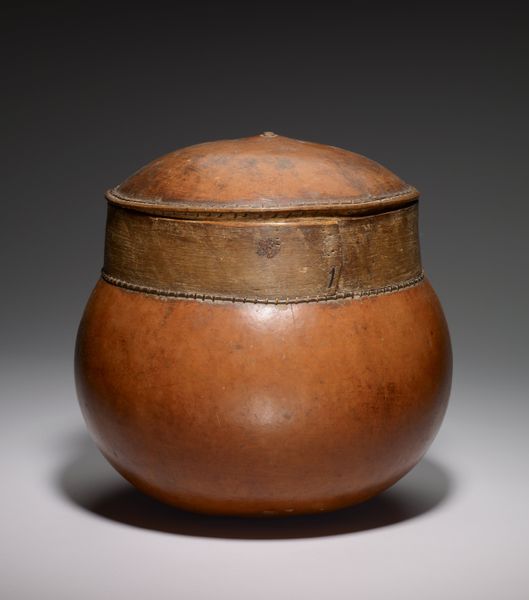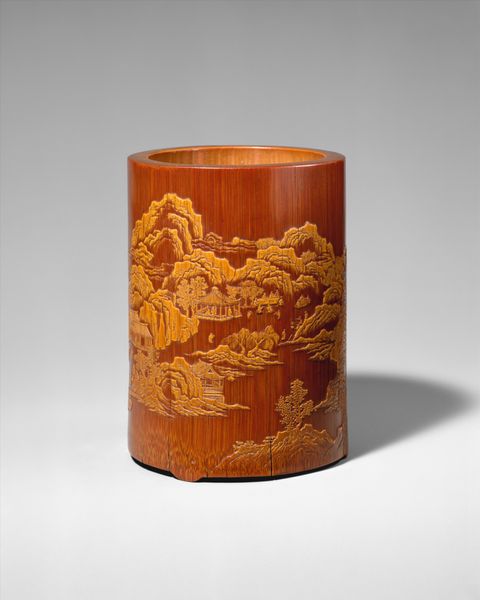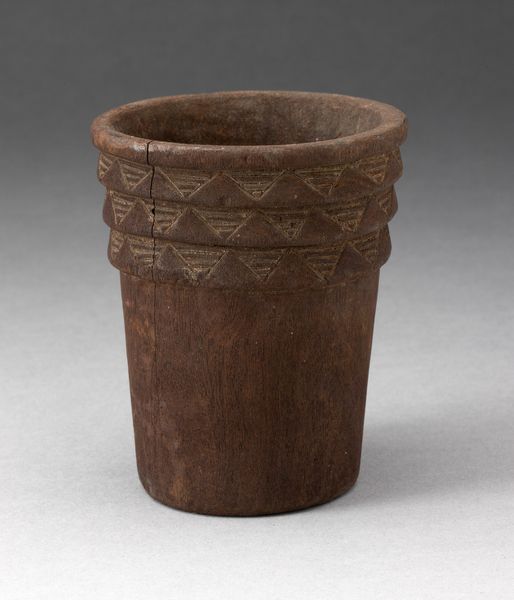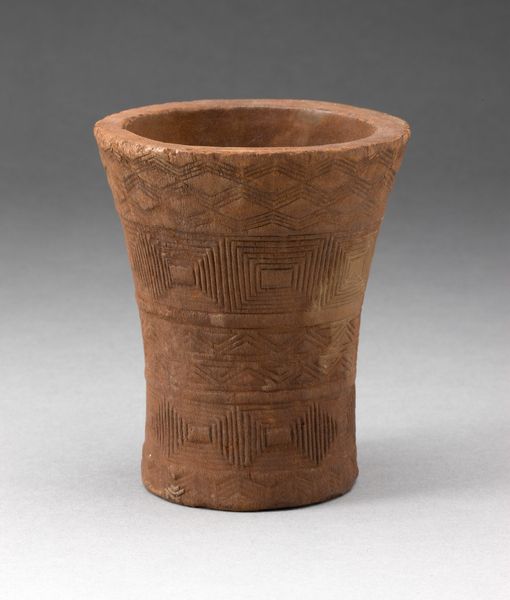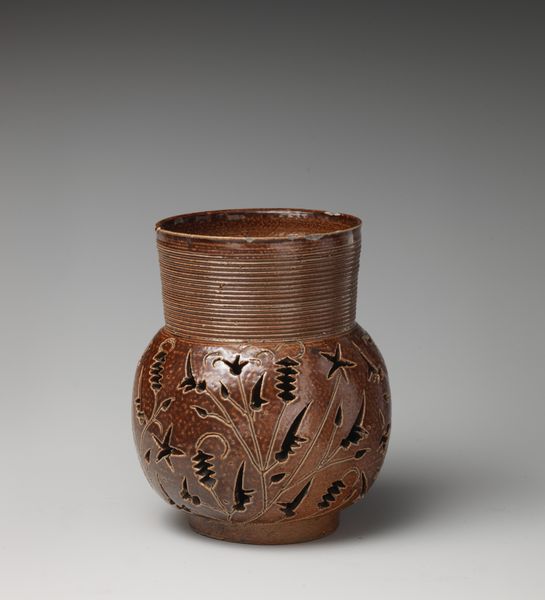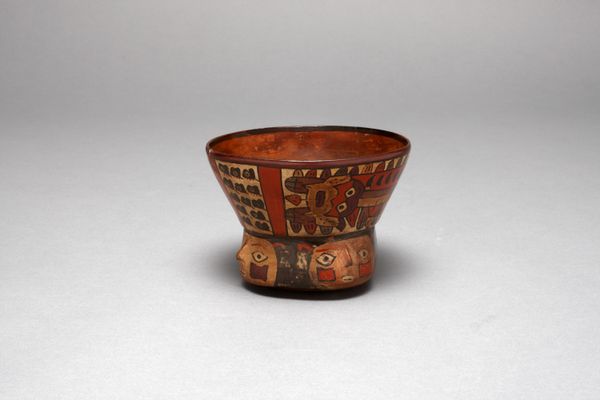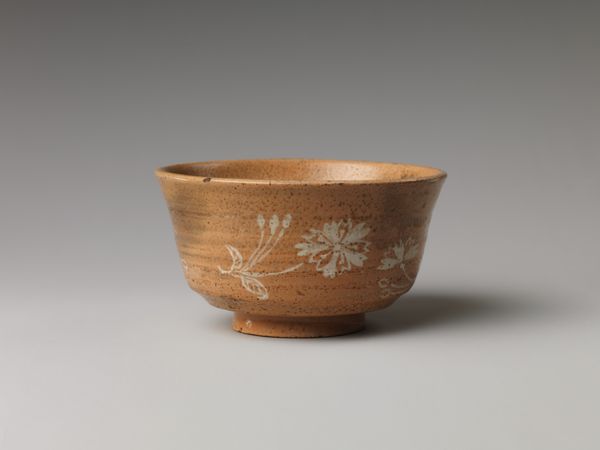
carving, wood
#
carving
#
asian-art
#
china
#
wood
#
calligraphy
Copyright: Public Domain
This cylindrical brush pot with an inscribed poem was made by Wang Shihong, sometime between 1658 and 1723. Notice how the artist harnessed a dark, rich wood, likely zitan, its surface providing a subtle grain that enlivens the form. The cylindrical shape is a study in restrained elegance, offering a complete synthesis of form and function. The verticality of the script contrasts with the vessel's shape, the characters acting as surface embellishments that invite the viewer to trace their forms and consider the poem's significance. This integration of text and material transforms the pot into a three-dimensional canvas, disrupting any definitive reading of space, and engaging with semiotic systems to decode cultural codes that may have informed the artwork's making. Consider how the artist destabilizes the boundary between utilitarian object and art. The poem’s inscription invites a re-interpretation of the object beyond its material form, and into the realm of intellectual and aesthetic contemplation.
Comments
No comments
Be the first to comment and join the conversation on the ultimate creative platform.

